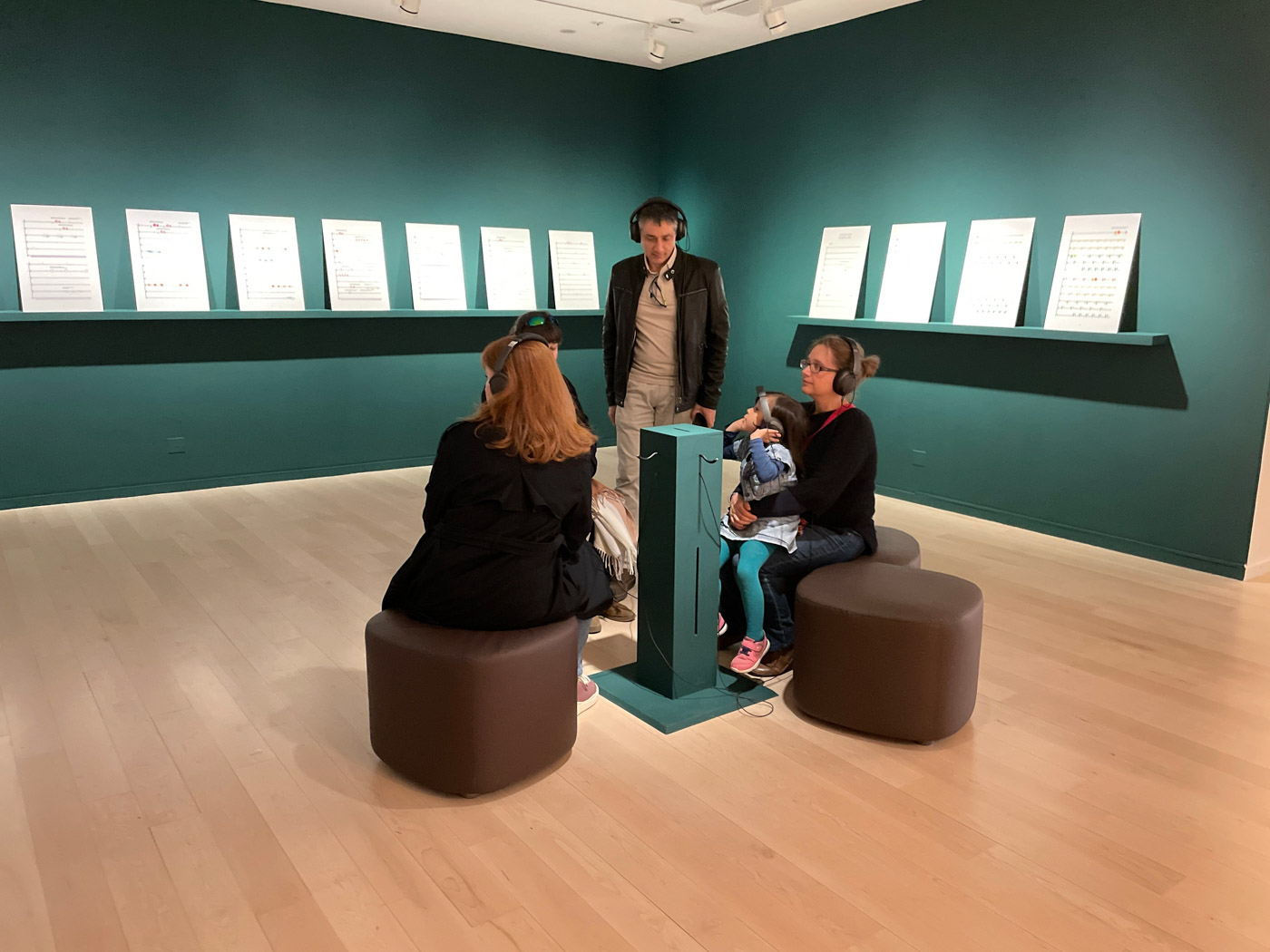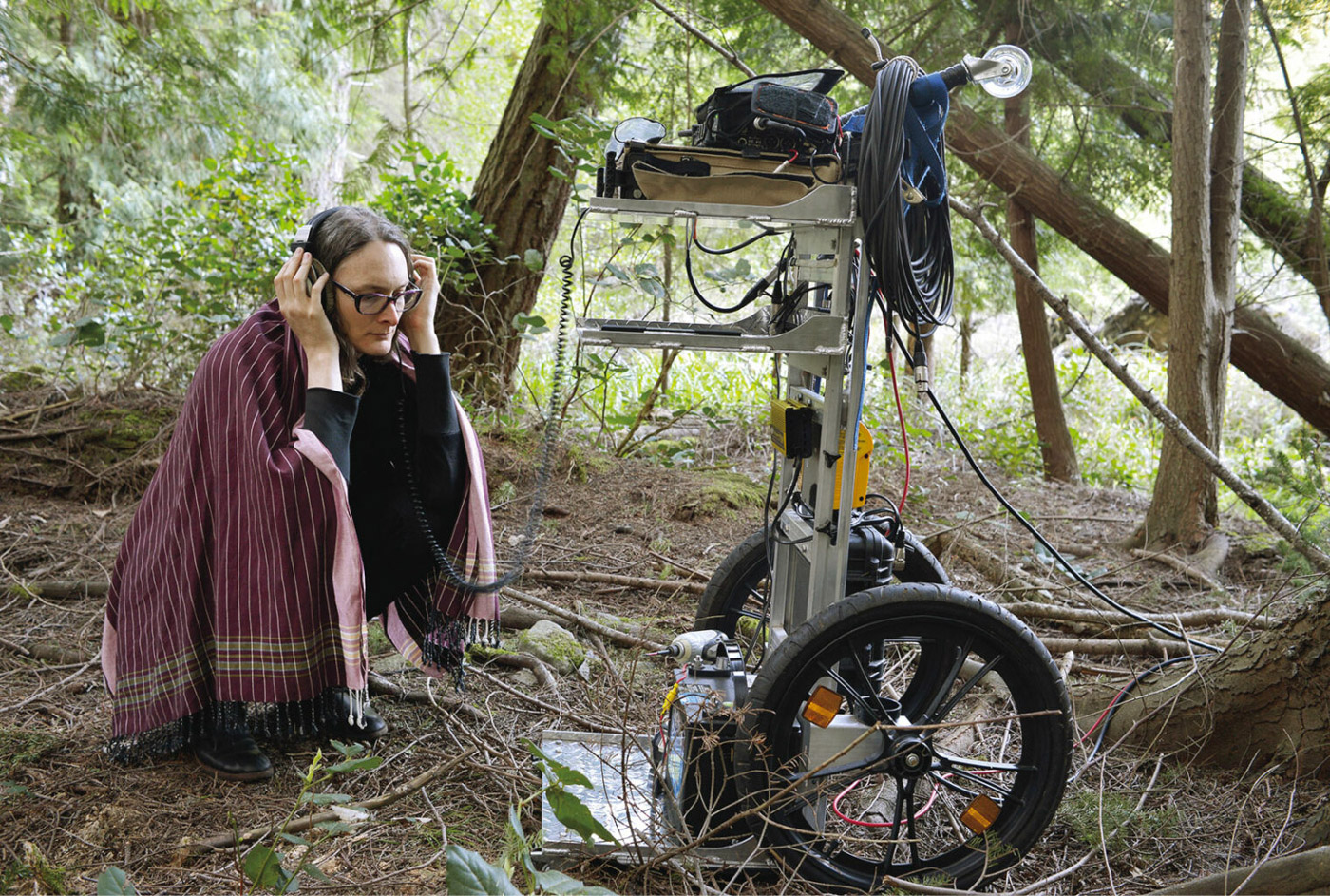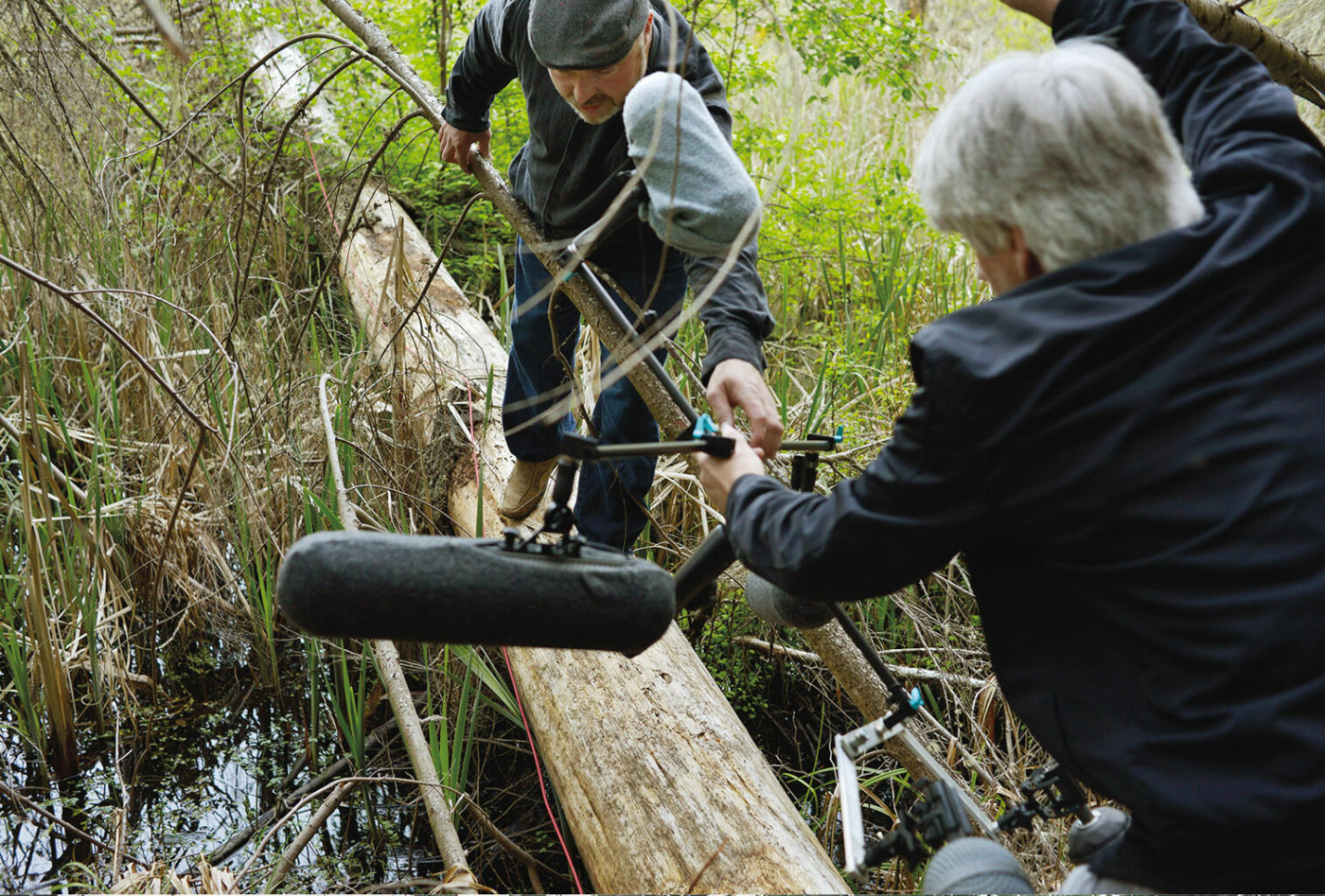There is no stage, and no instruments. The audience at the Centre Culturel Canadien in Paris sits on floor cushions and padded pouffes. It’s hard at first to find the singers embedded in the audience. Under the guidance of conductor Geoffroy Jourdain, the five choralists of Les Cris de Paris begin to gurgle, trill, and hum, one by one. Their throaty bird calls and frog croaks transport the room into the wetland of Ṯeḵteḵsen, Saturna Island, in the Southern Gulf Islands of B.C. The lights dim and brighten, symbolizing the movement of the day. The spatial arrangement, with singers placed around the room rather than side by side, makes the music—both playful and solemn—palpable to the audience.
The performance is the work of artists Brady Marks and Mark Timmings, who collaborated with musicologists, composers, writers, and musical ensembles. In the centre’s upper gallery, visitors listen on headphones to the same composition sung by Musica Intima, a Vancouver-based vocal ensemble. The sound emanating from two sources rather than five, though, does not reach the same spatial resonance as the live performance.
The project began about 10 years ago when Timmings, a multidisciplinary artist, began to explore creating a soundscape from the wetland across the road from his Saturna home. In 2016, he approached Marks, a sound artist and DJ, who was working at Vancouver’s co-op radio station, CFRO-FM, to ask if the station would air the wetland recording on Earth Day, April 22. They have been collaborating on the Wetland Project ever since. Using five microphones, they captured the sounds from the Saturna swamp in a continuous 24-hour recording.

Photo by Emilie Tremblay.
Timmings worked with the late musicologist Stephen Morris, his neighbour on Saturna, to transcribe the sounds into a musical score. At first glance, the music sheets look like conventional music, each line beginning with a treble clef, but unusual shapes replace the notes. Timmings explains, “To come up with the symbols on the illuminated score I considered the shape of each sound. I applied the same colour scale we use in the installation to represent pitch. The colour saturation represents volume.”
The colours were applied to the pitch of each note in the score using an algorithm, a set of mathematical rules. The lowest tones correspond to the cool hues of blue and violet. Green is in the middle, with the warm tones occupying the upper half of the scale.
In the lower gallery of the centre, visitors sit within a circle of five white banners. As the croaks and chirps sound out from five speakers, their matching colours light up the banners in a serendipitous correlation. Frog croaks, which stand out for their endurance and exuberance, are green, while the red-winged blackbird, with its red and yellow epaulettes, sings a more delicate tune that flashes the higher notes of those same colours. Robin song lights up in orange.

Photo by Nancy Angermeyer.
Brady and Timmings have also published a book, on view at the entrance to the exhibition. Each page is printed on solid-coloured paper and corresponds to a five-minute interval in the 24-hour recording. Contributors include Philip Kevin Paul, an Indigenous poet, who writes about his relatives’ relationship to the Ṯeḵteḵsen wetland, and Hildegard Westerkamp, a local composer who was key in developing the concept of ecological soundscapes with Canadian composer R. Murray Schafer in the 1970s.
Since 2016, the wetland recording has been played on the radio annually on Earth Day, every year taken up by more stations. This year it was played on more than 20 stations in five countries. The sounds and long moments of silence offer a respite from the constant rush of urban life.

Photo by Emilie Tremblay.
These marshy wetlands are critically important for their ability to store carbon, purify water, and help with flood control. They are also habitats for innumerable species. In B.C., three wetland areas—the Fraser River Delta, the Columbia Wetlands, and Creston Valley—are protected under the Ramsar Convention, an international agreement for the protection of such biomes. The Ṯeḵteḵsen wetland does not fit the size criteria, however, and is on private land. The soundscape project draws attention to the importance of wetlands in ecological security globally.
The project premiered at VIVO Media Arts Centre in Vancouver before travelling to an abandoned water tower in Denmark and then the Centre Culturel, whose mission is to promote a bond between France and Canada. A small piece of Canada is brought to life in the City of Lights through the power of voice and vision, transporting listeners to a lush microcosm of a West Coast marsh.
“You can barely name a better tool for learning than authentic curiosity,” says poet and contributor Philip Kevin Paul, “and listening is a big part.”
Brady Marks and Mark Timmings, Wetland Project: Explorations in Sound, Ecology, and Post-Geographical Art, Vancouver, Berkeley, London, Hemlock Printers, 2022. Exhibition runs at the Centre Culturel Canadien until May 20, 2023. Read more stories of the Arts.









